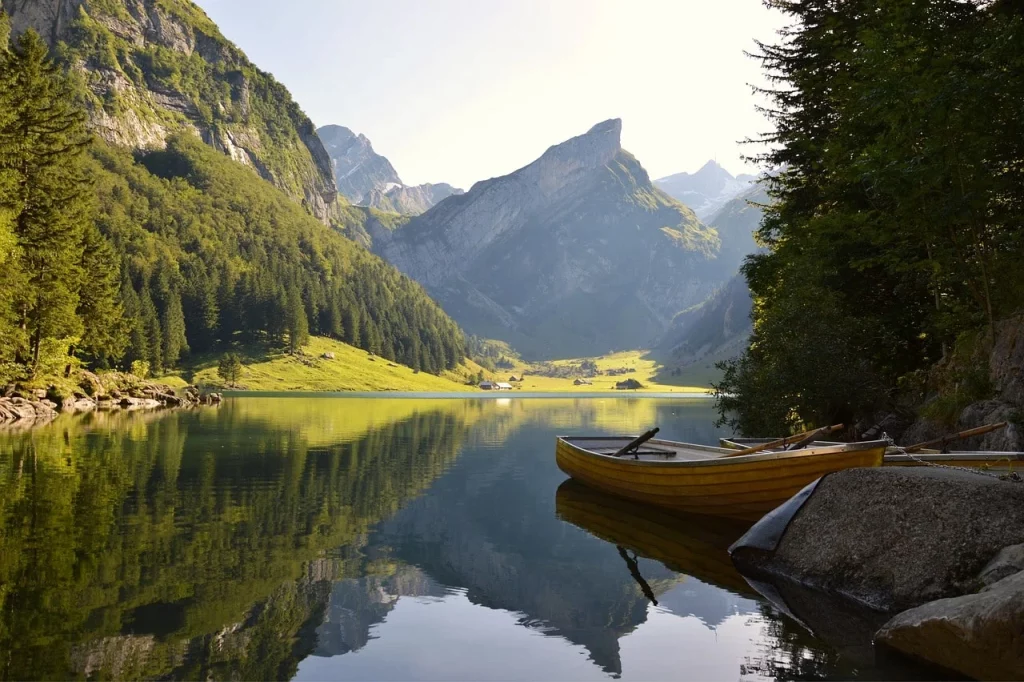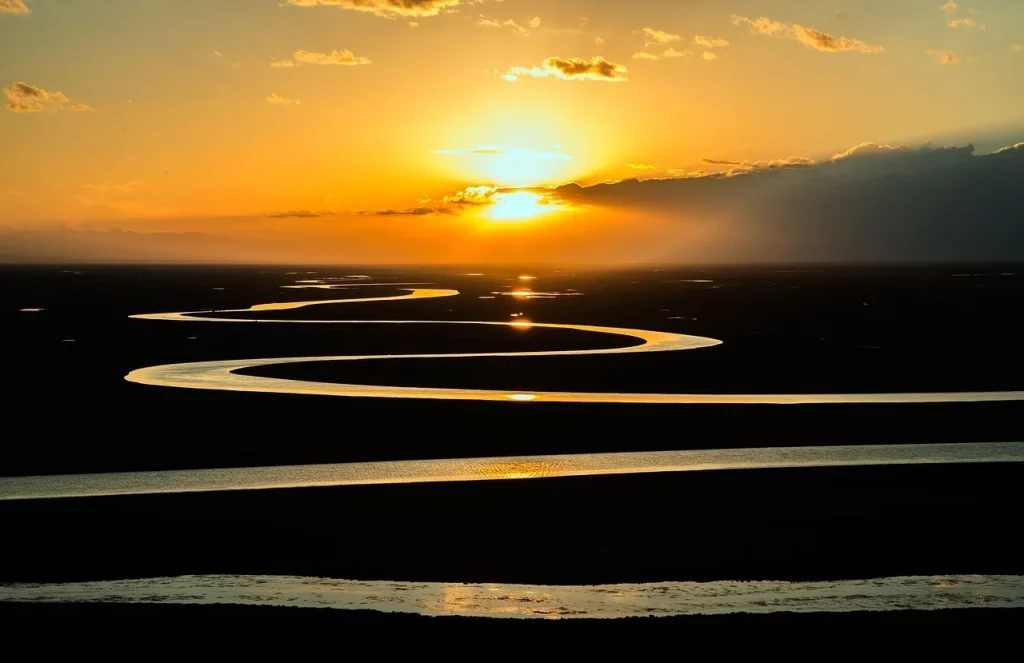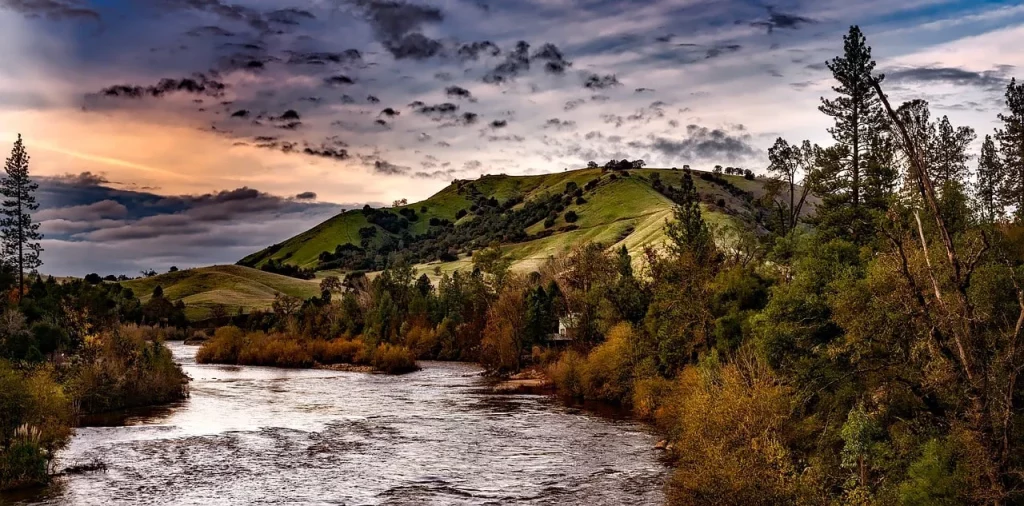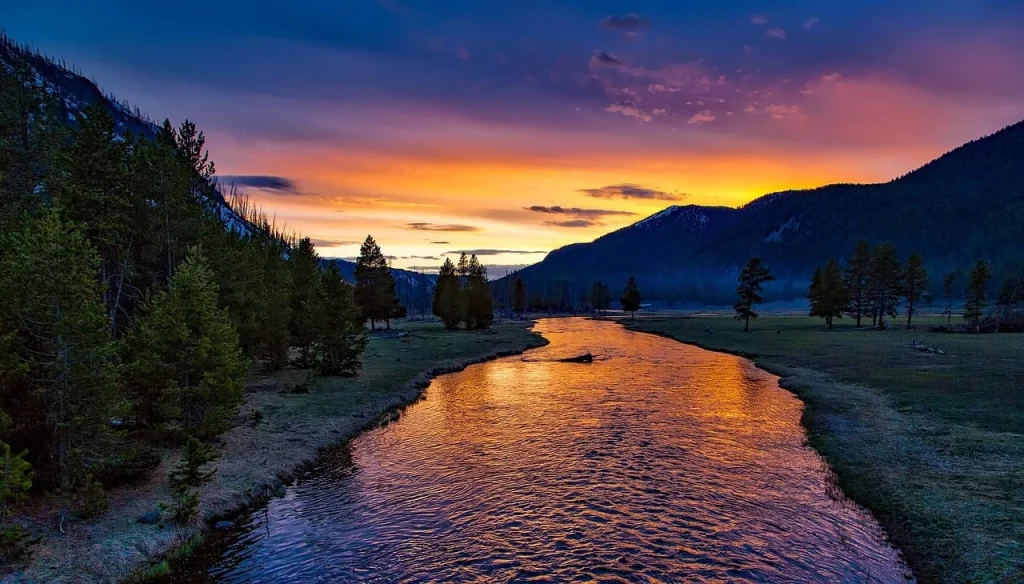Have you ever stood by a river and wondered about its journey? Rivers are more than just flowing water. They are the lifelines of civilizations, ecosystems, and stories.
In this article, we’ll explore some fascinating facts about rivers, from their ancient origins to the vital role they play in our modern world. We’ll discover how these magnificent waterways shape the earth, support diverse wildlife, and continue to influence human life. So, let’s embark on this journey together and uncover their wonders.
A river cuts through rock, not because of its power, but because of its persistence.
James N. Watkins
River Facts
Before you dive into the fascinating world of rivers, remember, a quiz awaits at the end of this article! Test your knowledge and see if you’re a true river expert. Read carefully, as every detail counts!
- The lengthiest river on Earth, the Nile, extends approximately 6,650 kilometers (4,130 miles).
- Over time, rivers can sculpt landscapes, creating wonders like the Grand Canyon.
- Discharging a vast water volume, the Amazon contributes about 20% of the world’s riverine freshwater to the oceans.
- Crucial for the development of human civilizations, rivers have been vital for the growth of ancient societies.
- The Mississippi River ranks as the world’s fourth longest river system and is the largest in North America.
- Rivers can exhibit varied hues, such as the Blue Nile, famous for its silt-induced color.
- Rich in biodiversity, river deltas are where rivers meet the sea, forming ecologically diverse areas.
- Regarded as sacred in Hinduism, the Ganges River in India is central to many religious rituals.
- Pollution in rivers can severely impact both wildlife and their ecosystems.
- The longest river in Asia and the world’s third-longest, the Yangtze River flows through China.
- Some rivers, like the Danube, traverse several countries, in this case, flowing through 10 European nations.
- There are subterranean rivers, such as the Puerto Princesa Underground River, in the Philippines.
- Spanning about 7% of the Earth’s terrestrial surface, the Amazon Basin is vast.

- In regions like Siberia, rivers such as the Lena River can freeze entirely in the winter.
- Known for its striking canyons and rapids, the Colorado River is a famous natural feature.
- Glacial rivers, for instance, can move exceedingly slowly, varying the river’s speed significantly.
- The Volga River holds the title of being the longest river in Europe.
- Supporting a variety of ecosystems, rivers are home to diverse species of fish, birds, and plants.
- Integral to the Indus Valley Civilization’s development, the Indus River was a key historical river.
- Estuaries, where the river meets the ocean, serve as important breeding grounds for many sea creatures.
- As one of the longest rivers in South America, the Orinoco River flows through Venezuela and Colombia.
- Floodplains, formed by rivers, are noted for their exceptional fertility and suitability for farming.
- Through hydropower, rivers can be harnessed as sources of renewable energy.
- China’s Yellow River, or Huang He, is named for its distinct silt content that gives it a yellow-brown hue.
- There are seasonal rivers like Central Asia’s Karakum, which do not flow throughout the year.
- Natural formations such as waterfalls and gorges are often the result of river erosion.
- The longest river system in Australia, the Murray-Darling, is significant on the continent.
- In arid areas, seasonal rivers may completely dry out during certain times of the year.

- Meandering bends in rivers, known as meanders, form due to ongoing erosion and deposition.
- The world’s deepest river, the Congo River, has depths that exceed 220 meters (720 feet).
- Human activities, such as damming and rerouting, can alter rivers artificially.
- The Tigris and Euphrates rivers are among the most historically significant due to their role in Mesopotamian civilizations.
- Dependent on the Nile River for agriculture and transport, ancient Egyptians thrived along its banks.
- Since ancient times, rivers have been utilized as pathways for transportation and trade.
- Salmon migrations up rivers are essential for their lifecycle and a remarkable natural phenomenon.
- Flowing through six countries, the Rhine River is a vital part of European commerce.
- Rivers often form natural borders between countries or different regions.
- The Paraná River in South America is renowned for its expansive wetlands, the Pantanal.

- Many significant cities, such as London, Paris, and New York, originated along riverbanks for strategic and resource reasons.
- Over geological timescales, rivers play a pivotal role in landscape formation.
- In Thailand, the Chao Phraya is essential for the country’s agricultural and transportation needs.
- Studying river sediments can provide valuable insights into past environmental conditions.
- The Missouri River is the longest tributary of the Mississippi River system.
- Unique rivers like Africa’s Okavango end in inland deltas instead of flowing into the sea.
- Rivers have shaped various cultures and traditions, influencing the arts, literature, and religious beliefs.
- Known for its monsoon-triggered floods, the Brahmaputra River in South Asia is a major waterway.
- River piracy, a phenomenon where a river’s course is captured by another, can occur due to natural events.
- Many endangered species find critical habitats in river ecosystems.
- Causing substantial destruction, flash floods in rivers can be extremely hazardous.
- Shaping human history, rivers have been foundational to the rise of numerous civilizations.
River Myths

As we transition from the flowing (pun no1) facts about rivers, let’s now navigate the streams (pun no2) of myths and truths. In this section, we’ll be diving into common myths about rivers and separating facts from fiction.
- Rivers Always Flow South
The direction in which a river flows is primarily determined by the topography of the land. Rivers flow from higher to lower elevations, regardless of the compass direction. For instance, the Nile River in Africa flows predominantly northward, defying this common misconception. - The Color of a River Indicates Its Cleanliness
The color of a river can be influenced by many factors, such as sediment, algae, and the reflection of the sky, not just cleanliness. A clear river can still contain pollutants, while a murky one might be naturally colored by its environment. - All Rivers Eventually Reach the Ocean
While many rivers do flow into oceans, not all do. Some rivers end in lakes, wetlands, or even deserts where their waters evaporate or seep into the ground, such as the Okavango River in Botswana that ends in the Kalahari Desert. - Rivers Are Unlimited Sources of Freshwater
Rivers, though significant sources of freshwater, are not inexhaustible. Their flow and health can be affected by factors like climate change, overuse, and pollution. Sustainable management is crucial to ensure their longevity as freshwater sources. - Bigger Rivers Are Always Deeper
The size of a river doesn’t necessarily correlate with its depth. Factors like the riverbed topography, water volume, and geological structures play a vital role. Some large rivers can be quite shallow, while smaller ones can be unexpectedly deep.
No products found.
River Quotes

Our journey so far has been quite fascinating. I hope you are enjoying it as much as I do. Let’s continue with some of my favorite quotes about rivers. Let me know more in the comment section so I can add them to the list.
Rivers know this: there is no hurry. We shall get there someday.
A.A. Milne
A.A. Milne, in this serene quote, conveys a message of patience and the gentle, inevitable flow of time, akin to a river’s journey.
The river is one of my favorite metaphors, the symbol of the great flow of Life itself. The river begins at Source, and returns to Source, unerringly.
Matthew Fox
Matthew Fox uses the river as a profound metaphor for life’s journey, emphasizing its cyclical nature and connection to the source.
A river seems a magic thing. A magic, moving, living part of the very earth itself.
Laura Gilpin
Laura Gilpin captures the enchanting and dynamic essence of a river, portraying it as an integral, living part of the earth.
Life is like the river, sometimes it sweeps you gently along and sometimes the rapids come out of nowhere.
Emma Smith
Emma Smith draws a parallel between life and a river, highlighting its unpredictability and varying pace.
No man ever steps in the same river twice, for it’s not the same river and he’s not the same man.
Heraclitus
Heraclitus presents a philosophical view on change and impermanence, using the ever-flowing nature of rivers as a symbol for constant transformation.
River FAQ

As we flow towards the conclusion of our journey, just like a river reaches the sea, we arrive at the FAQ section. Pay close attention, as these answers will be essential for the upcoming quiz.
- How are rivers formed?
They start their journey as tiny droplets of water, often from rain or melting snow, which gather together in streams or springs. These streams love to travel, so they flow downhill, joining hands with other streams to become larger and stronger. Over time, with the help of gravity, they carve their way through the land, creating riverbeds. - Can rivers flow uphill?
This might sound like a trick question, but rivers, following the rules of gravity, always flow downhill, never uphill. However, there are some rare exceptions when it seems like they do! This can happen due to certain optical illusions or when the land’s slope is so gentle that it’s hard to tell which way is up or down. - Are rivers man-made?
Most rivers are natural, formed by Mother Nature’s own hands over thousands or even millions of years. However, humans have learned to create artificial rivers, known as canals, for various purposes like irrigation, transportation, or landscaping. - Can rivers freeze?
Yes, rivers can play freeze tag! In colder climates, when the temperature drops way below freezing, the surface of a river can turn into ice. But here’s the interesting part – often, only the top layer freezes, and underneath, the river continues to flow, like a secret world under the ice. The depth, speed, and temperature of the water all play a role in how and when a river decides to put on its ice costume. - Are rivers freshwater or saltwater?
Rivers collect their water from rainfall and melting snow, which is naturally fresh, not salty. This makes them different from oceans and seas, which are big saltwater parties. Rivers are crucial for providing freshwater to ecosystems, animals, and yes, us humans too – for drinking, farming, and so much more!
No products found.
River Trivia

Welcome to our rip-roaring river quiz! Get ready to dive into the currents of knowledge. But be warned: if you don’t get any questions right, you might find yourself up the creek without a paddle!
Conclusion
In the end, rivers are like the veins of our planet, pulsing with life and vitality. They’ve been the backdrop for historical events, the lifeblood of communities, and a source of endless inspiration.
As they flow from mountain to sea, they connect us in unseen ways, reminding us of our shared journey on this blue planet. So, next time you stand by a river, listen closely because you might just hear the pulse of the earth itself.
As always, let’s close this journey with a funny question: If rivers could talk, what do you think they would say about the ducks that float on them? Let me know in the comments.
3 Sources Used For This ArticleQuotes About River And Streams – The Solo Globe Trotter
Beautiful River Quotes and Captions – The Travelling Tom


